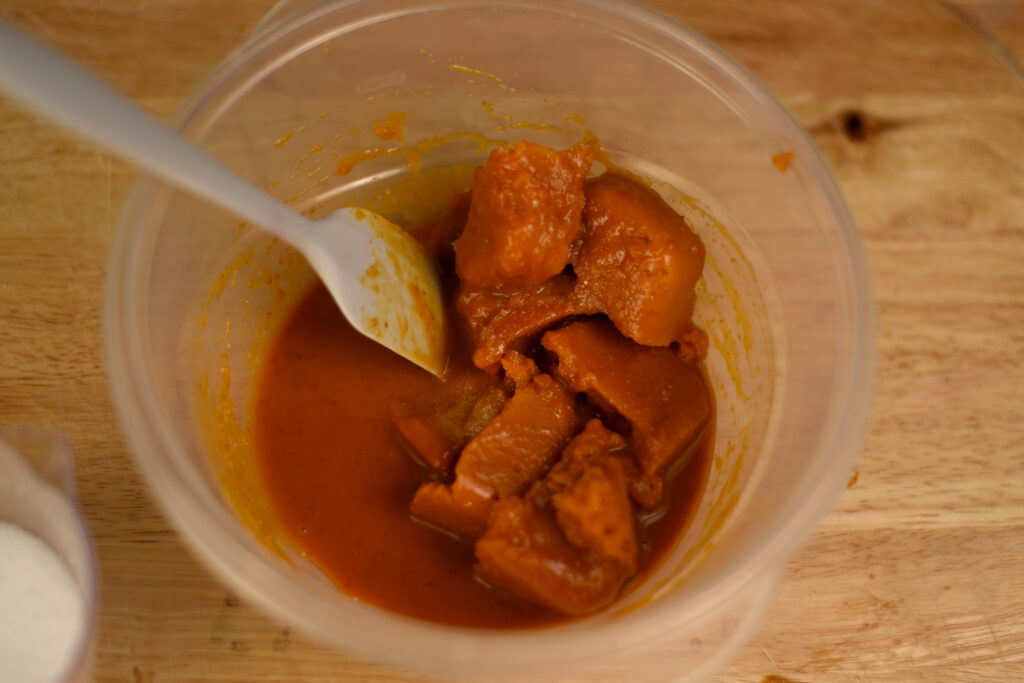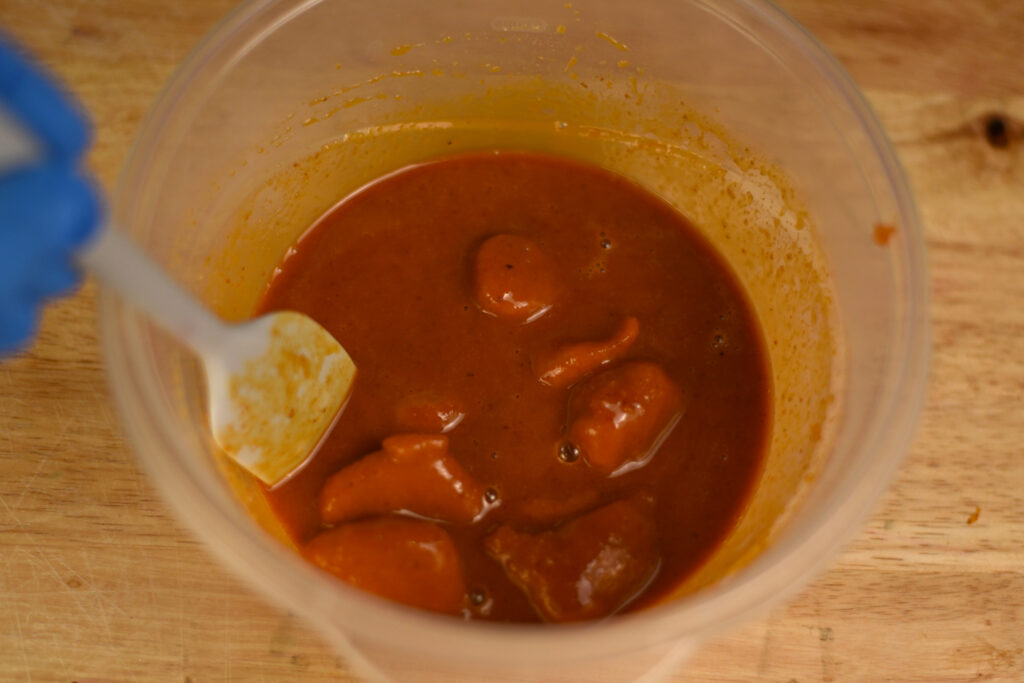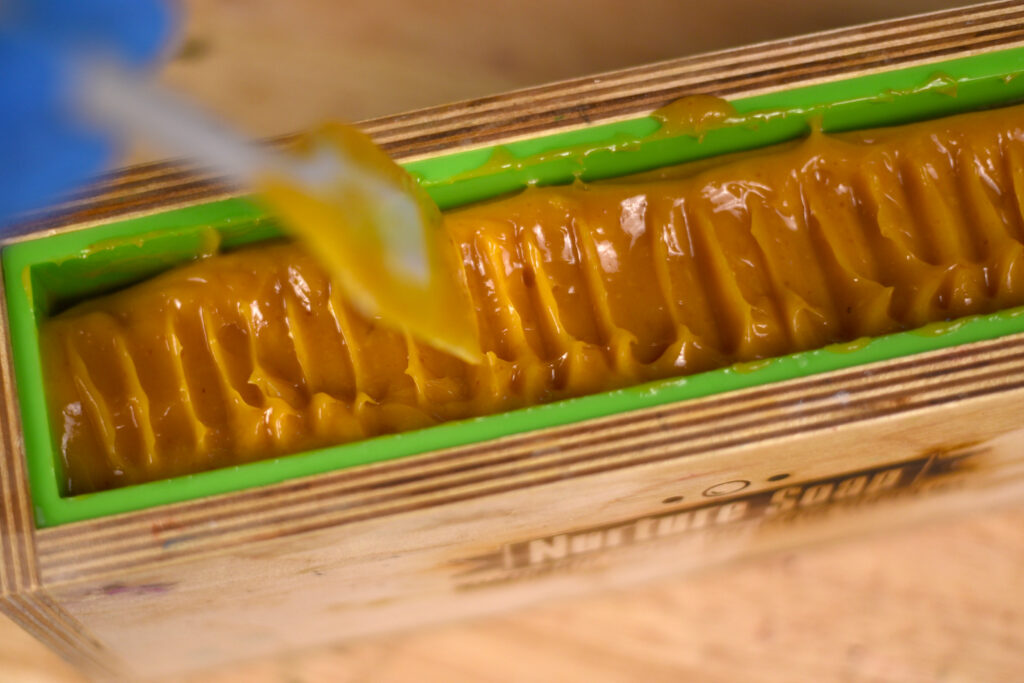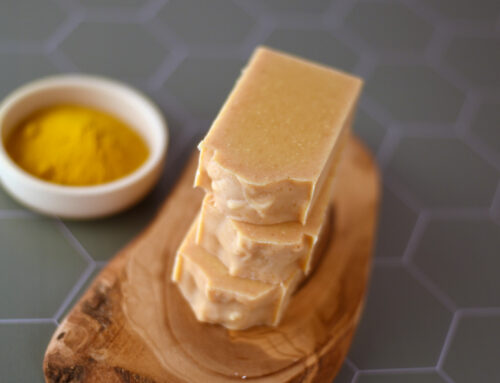Is there anything more “FALL” than pumpkin and cinnamon?! This soap is sure to be a family favorite during this time.
(Disclosure: Some of the links below are affiliate links, meaning, at no additional cost to you, I will earn a commission if you click through and make a purchase.)
Cinnamon Essential Oil
Let’s first talk about cinnamon essential oil! Cinnamon essential oil, derived from the bark or leaves of the Cinnamomum tree, has both antimicrobial properties and stimulating properties for boosting mental alertness. It is a very common scent during the fall and winter holidays. It should be used with caution and should be correctly diluted in your finished product.
I prefer cinnamon leaf essential oil in soap. It has a very small usage rate in skincare – only about .5% should be used in soap! I usually grab my copy of Tisserand’s Essential Oil Safety when working with essential oils that are known to be irritating. You can research the risk of using it, safety and suggested usage rates.
I will also say that even small amounts of cinnamon can irritate some people’s skin. I keep this soap for personal use only. But that’s just me being ultra cautious these days! My husband and I LOVE cinnamon scented soap so I try and make some around the fall each year.
And for this recipe, I’m combining it with pumpkin to create a simple fall soap that is comforting and warming. I simply love cinnamon soap!
As mentioned above, we should only use .5% in our soap. And since water evaporates, I calculate how much to use based on my total oils in a recipe. The recipe below uses 900 grams of base oils, so I’ll use 4.5 grams of cinnamon leaf essential oil. (900 x .5%=4.5 grams)
You might thinking that isn’t enough to even scent the soap…but I promise it is! It is lightly scented but the cinnamon still comes through, especially when using your soap in a hot shower. You can combine cinnamon with other essential oils as well! I love combining it with orange essential oil especially!
Cinnamon safety! You don’t want to get undiluted cinnamon essential oil on your skin. I treat it just like lye! Use it in a well-ventilated area and wear gloves.
Pumpkin Puree
In this recipe I’m using pumpkin puree in place of water! You can use up to 100% of your water amount in pumpkin puree. You can also use 50% pumpkin puree and 50% water…pretty much whatever ration you want!
Pumpkin puree contains sugar, which can heat up quite high when combined with lye. To combat this, I like to freeze my pumpkin puree into cubes. It helps keep the temps down when making your lye solution. (This is a perfect activity for the kiddos.)

Pumpkin and Cinnamon Cold Process Soap Recipe
Basic Body Bar – More Moisture from Lovin Soap Studio Recipe eBook (Grab your copy for 50 cold process soap recipes + 64 essential oils blends!)
Instead of using water, we’re using pumpkin puree!
Base Oils
- Coconut Oil (76 degree) – 270 grams (30%)
- Shea Butter – 90 grams (10%)
- Olive Oil – 342 grams (38%)
- Avocado Oil – 72 grams (8%)
- Rice Bran Oil – 126 grams (14%)
Lye Solution
- Sodium Hydroxide – 126 grams (5% superfat)
- Pumpkin Puree – 252 grams (1:2, lye:water ratio)
Scent
As mentioned above, we’re simply using cinnamon leaf essential oil! My favorite place to grab essential oils is from Appalachian Valley Natural Products.
- Cinnamon Leaf Essential Oil – 4.5 grams (my scale doesn’t do partial grams so I just used 4 grams)
PREP: Freeze pumpkin puree in ice cubes! I simply used canned pumpkin. Be sure you don’t use pie filling as it contains other ingredients, including sugar.
Gear up in your goggles and gloves before you handle the lye. If you are new to soapmaking, be sure to download our free guide, How to Make Cold Process Soap!
Step 1: Create a lye solution. Weigh the frozen pumpkin and lye into two separate containers. Slowly pour the sodium hydroxide into the pumpkin while stirring. The lye will start to melt the frozen pumpkin as you stir. Stir until completely dissolved and set aside to cool.




Step 2: Prepare the base oils. First, weigh any solid oils and butters into a container and melt. You can melt using the microwave or low heat on a burner.


Step 3: Next, weigh each liquid oil into the melted oils. The liquid oils will cool down the melted oils and leave you with a base oil mixture that is about at the correct temperature to make soap. It might still need to cool down a bit.

Step 4: Weigh your essential oil or fragrance oil into a glass or stainless steel container and add to your base oils. You can also simply weigh the essential oils directly into your base oils. I added 4 grams of cinnamon leaf essential oil. I used a dropper so I could be super accurate!


Step 5: Add any additives to your oil mixture. (I didn’t add any additives, but you could add 1 tablespoon of oatmeal or a 1/2 teaspoon of cinnamon powder.)
Step 6: Prepare your mold as your lye solution and oils cool. If you need to line your mold, line it. I’m using my favorite silicone loaf mold – Nurture’s Tall and Skinny Loaf Mold.
Step 7: Check the temperatures using an infrared gun. You should now have a container containing liquid base oils and a container containing lye solution. Take the temperatures using an infra-red temperature gun. Be sure to stir each mixture before taking the temp. You want your temperatures to be under 100°F because both cinnamon essential oil and pumpkin can heat your soap up. Soap cool! I went with 103°F for the lye solution since my oils were nice and cool at 88°F.


Step 8: Once you have reached desired temperatures, pour the lye solution into the oil mixture and mix to trace.



Step 9: Pour your soap into your mold!

I used my spatula to create a little texture on top! Super simple!



Step 10: Let your soap harden and saponify for at least 24 hours. If your soap doesn’t gel, it could take another day or two to harden enough to unmold.
Step 11: Unmold your soap, cut and allow it to cure for 4-6 weeks.

NOTE: It has been four weeks and I can still really smell the cinnamon! Even at such a small amount, it comes through. 🙂
Happy Soaping!
Amanda







I’m a bit older and prefer a printed book. Do you have printed available?
What I don’t see for a beginner what size mold do you use for your recipe. Newbie here and want to purchase the correct size loaf mold.
What I don’t see for a beginner what size mold do you use for your recipe. Newbie here and want to purchase the correct size loaf mold.
Hello! Where can I buy more of your recipes like this one for making and selling the soap? I bought “ COLD PROCESS SOAP RECIPES
55 Tried-And-True Soap Recipes from a Successful” recently and love it!
Hi Shelley! Check out Amanda’s eBooks in the shop! Her Lovin Soap Studio Cold Process Soap Recipe eBook is well loved, also the Making Salt Bars one and Essential Oil Blends for Handcrafted Soap. There are a lot of eBooks about Soap Business, too! https://lovinsoap.com/product-category/ebooks/ … or her Membership comes with all that and way more! https://lovinsoap.com/sp/memberships/